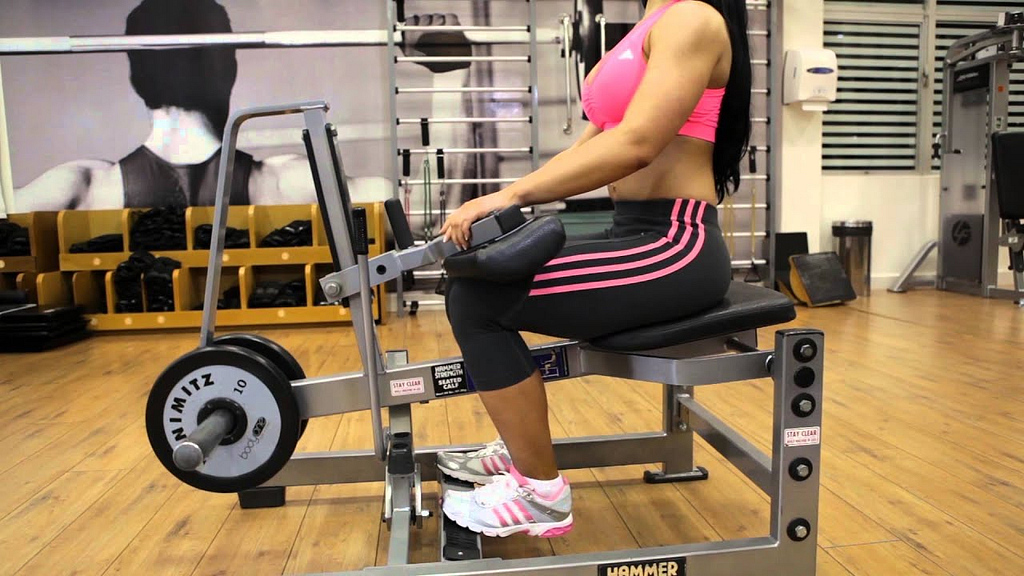A calf raise machine is an essential piece of equipment designed to isolate and strengthen the calf muscles in your legs. With the increasing popularity of home gyms and a growing focus on targeted lower body workouts, investing in a high-quality calf raise machine can be a game-changer in achieving well-defined and powerful calf muscles. As an exercise, incorporating calf raises into your workout routine enables you to improve both your balance and muscle functionality.
There are various types of calf raise machines available in the market, each offering unique features and capabilities. Some popular models include seated calf raise machines, standing calf raise machines, and even 45-degree calf raise machines. To choose the right machine for your home gym, you must consider factors such as your budget, available space, and exercise goals.
Opting for a calf raise machine not only ensures an effective workout for your calves but also provides versatility in your training. Many calf raise machines can support performing exercises with either standard or Olympic weight plates, allowing for adjustable resistance as your strength progresses. Ultimately, investing in a calf raise machine is a smart choice for anyone looking to enhance their lower body strength and muscle definition.
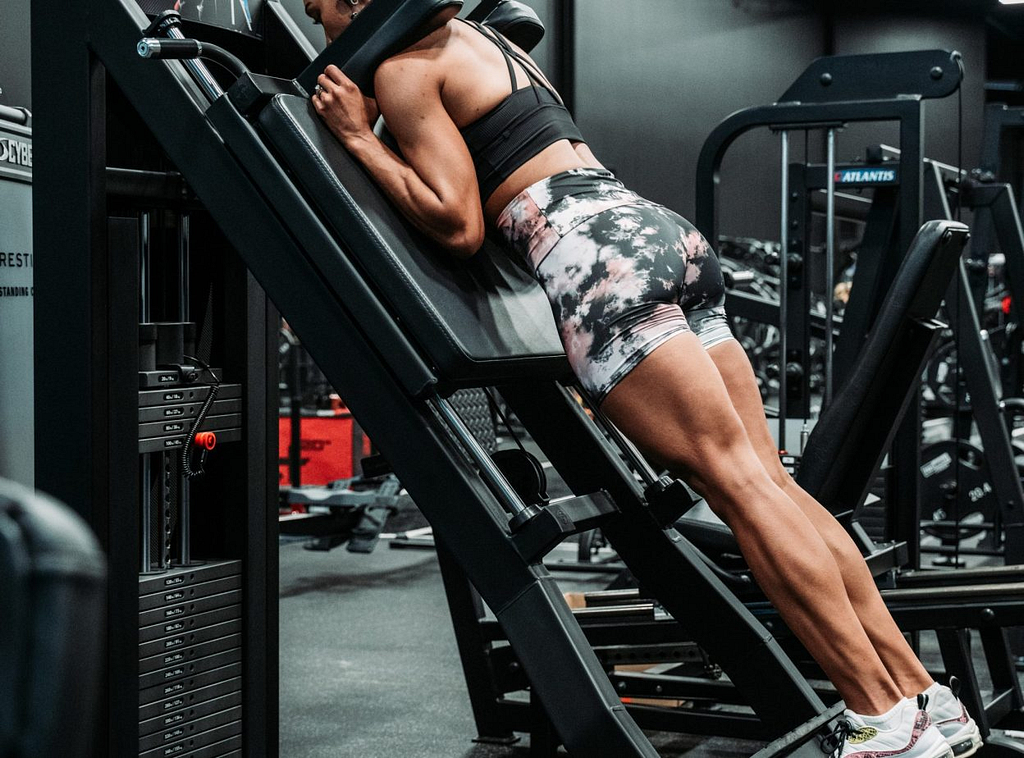
Understanding Calf Raise Machines
Calf raise machines are designed to target and strengthen the calf muscles in your legs. These machines come in a variety of styles and constructions and are essential for any well-rounded strength training routine.
Machine Types
There are several types of calf raise machines available which cater to different preferences and workout styles.
- Seated Calf Raise Machine – As the name suggests, this equipment allows the user to perform calf raises while in a seated position, emphasizing the soleus muscle more than the gastrocnemius muscle. The Soozier Seated Calf Raise Machine is one such example.
- Standing Calf Raise Machine – These machines require the user to perform calf raises while standing. They primarily target the gastrocnemius muscle. An example of this type is the TDS Standing Calf Machine.
- Squat/Calf Machine – This versatile equipment allows users to perform squats and calf raises on the same machine. The TDS Leverage Calf and Squat Machine is an example of this type.
- Tibia Dorsi Machine – This specialized machine targets the anterior tibialis muscle located near the shin. It’s less common in home gyms but is sometimes found in commercial gyms.
Key Features
When choosing a calf raise machine, consider these key features to ensure that you select the right one to suit your needs and preferences:
- Knee Pads and Thigh Pads – These padded supports provide comfort and stability during the exercise and are typically adjustable to accommodate different leg lengths, such as with the Soozier Seated Calf Raise Machine.
- Adjustable Height – Most calf raise machines have adjustable height settings so that users of various heights can find their optimal working position.
- Footplate – Look for machines with good quality, non-slip footplates, like the TDS Standing Calf Machine.
- Frame – The machine’s construction should be sturdy and made from materials like heavy-duty steel for stability and long-lasting durability.
- 3:1 Weight Ratio – Some machines feature a 3:1 weight ratio, which means that the machine can effectively triple the weight being lifted, making your workout more challenging.
- Standard and Olympic Weight Plates – Depending on the machine, it may accommodate either standard or Olympic weight plates or even both styles.
- Platforms – Platforms on tibia dorsi machines need to be comfortable and secure for placing one’s feet during the exercise.
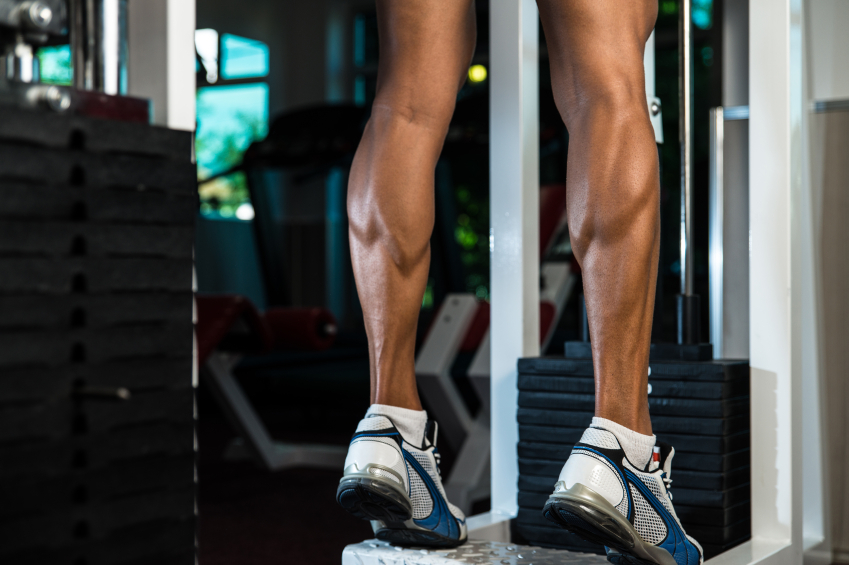
Benefits of Using Calf Raise Machines
Strength and Conditioning
Calf raise machines are an effective tool for calf training, specifically for building strength and muscle mass in the lower leg. By targeting the major calf muscles – gastrocnemius and soleus – calf raise machines can help develop stronger and more defined calves. This is essential for various athletic activities as well as daily movements like walking and climbing stairs.
Using a calf raise machine provides a controlled and focused range of motion, which allows for better muscle activation and growth. The adjustable resistance on these machines also enables users to progressively increase the weight as they become stronger, making it a highly effective part of strength training routines.
Fitness and Health
In addition to their contribution to strength and conditioning, calf raise machines also offer numerous health benefits. One of the main goals of calf training is to improve overall lower body functionality, which can translate to better performance in various exercises and sports. Stronger calves enable greater explosiveness and agility, which are important factors in athletic performance.
Developed calf muscles also play a crucial role in stabilizing the ankle and foot, aiding in injury prevention. Furthermore, strengthening the calf muscles can help increase the range of motion in the ankle joint, leading to better overall functionality and reduced risk of injuries.
Additionally, calf raise machines provide a low-impact workout that effectively targets the calf muscle group without placing excessive stress on joints. This makes it an excellent option for those looking to incorporate calf training into their fitness regimen without causing strain on their knees or other lower body joints.
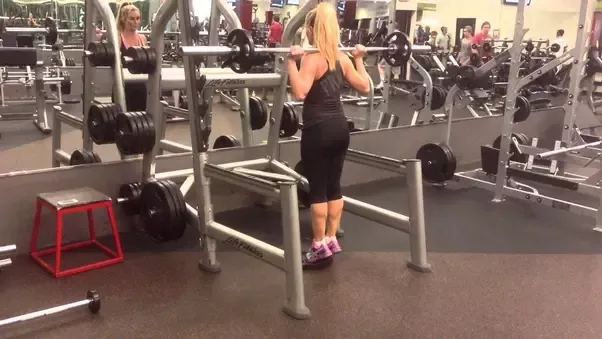
Top Calf Raise Machines
When looking for a calf raise machine for your home gym, it’s essential to consider various factors such as budget, quality, durability and space requirements. In this section, we will discuss some of the best calf raise machines in different categories to help you make an informed decision.
Budget-Friendly Choices
For those with a limited budget, it’s still possible to find a good quality calf raise machine without breaking the bank. The Body-Solid GSCR349 Seated Calf Raise Machine is an affordable yet solid option. It has a compact design measuring 47 x 20 x 39 inches and a weight capacity of 95 lbs. This machine offers great value for money and is perfect for those starting their fitness journey.
Another budget-friendly option is the Soozier Seated Calf Raise Machine. It is easy to adjust with pop pins and can accommodate up to 350 pounds of weight. Sleeves on this machine can fit two-inch weight plates.
Premium Options
If you have a larger budget and are looking for high-quality, premium options, the XMark Seated Calf Raise Machine is a popular choice. This machine is built with heavy-duty steel and features dual Olympic weight posts for maximum versatility and workout options.
The Body Solid Pro Clubline Squat/Calf Rack is another premium machine designed not only for calf raises but also for squats. This versatile piece of equipment is made from high-quality materials, ensuring durability and reliability in a home gym setting.
Durable and Reliable
For a calf raise machine that offers durability and reliability, the Titan Fitness Tibia Flexion Machine is a great choice. This calf machine focuses on tibia dorsi exercises and is made with heavy-duty steel construction to ensure longevity.
Another reliable option is the TDS Leverage Standing Squat/Calf Rack. This machine boasts not only durability but also stability and ease of use. With its solid, user-friendly design, you’ll have no trouble incorporating it into your home gym routine.
In conclusion, selecting the best calf raise machine fitting your gym and preferences is crucial for your fitness journey. By considering factors such as budget, quality, and durability, you can make a well-informed decision on the ideal calf raise machine for your home gym.
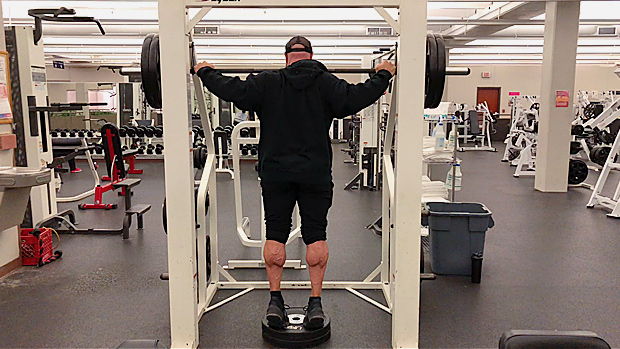
How to Increase Your Calf Development
Understanding Genetics
It’s essential to understand the role that genetics play in calf development. Some individuals may have naturally larger calf muscles, which is determined by their genetic makeup. Consequently, it’s important to set realistic expectations when working on calf muscle growth. Regardless of genetics, consistent and targeted training can help improve the size and strength of one’s calf muscles.
Efficient Training Techniques
Incorporating a mix of calf raise variations is crucial to optimizing your training routine. By performing exercises such as the Standing Calf Raise Machine and mixing them with bodyweight exercises and resistance training techniques, you can better target your calf muscles, achilles, and core. Some popular calf raise variations include:
- Seated calf raises
- Double-leg standing calf raises
- Single-leg standing calf raises
- Smith machine calf raises
These exercises help individuals focus on both the gastrocnemius and soleus muscles, which make up the majority of the calf muscle group.
Building Calf Strength
When working to increase calf strength, it’s important to prioritize the quality of each repetition, rather than focusing solely on the volume of exercises performed. Incorporate resistance in your calf raise exercises by gradually adding weight, adjusting the machine settings, or using a resistance band.
Challenging the muscles is key to growth, and targeting the calves with various forms of resistance and calf raise variations will better promote improvement. In addition to calf-focused exercises, it’s essential to engage different muscle groups, such as the triceps and core, to enhance overall balance and strength.
By understanding the role of genetics, employing efficient training techniques, and focusing on building calf strength, individuals can boost their calf development and work towards stronger, more defined calf muscles.
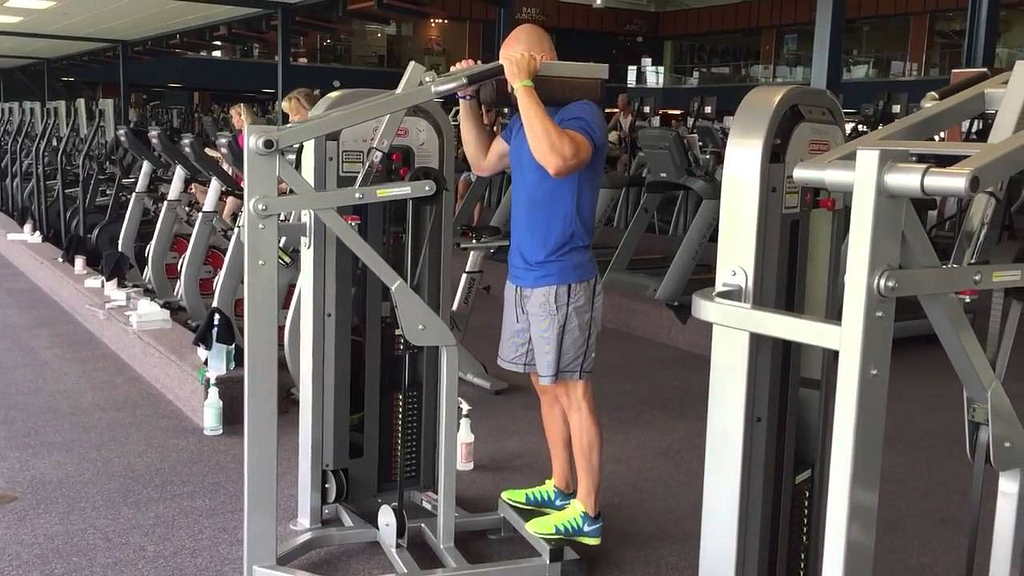
Considerations When Choosing a Calf Raise Machine
Safety Features
While selecting a calf raise machine, pay attention to its safety features such as swiveling thigh pads and sturdy construction. Look for machines made with heavy-duty steel and pillow block bearings for additional stability and durability. These features will ensure that your home gym equipment is both safe and long-lasting.
Weight Capacities
Weight capacities vary on different calf raise machines, making it essential to consider the maximum weight capacity that suits your fitness goals. For instance, the Soozier calf raise machine accommodates up to 350 pounds, whereas the TDS standing calf raise machine supports a maximum weight capacity of 1000 pounds. Always opt for a machine with a weight capacity that meets or surpasses your requirements to ensure a comfortable and safe exercise experience.
Space and Size
Calf raise machines come in various sizes and designs, so it’s crucial to select one that fits your available space. Consider both the dimensions of the machine and the area you have in your home gym when choosing. Some calf raise machines may be more compact than others, making them ideal for those with limited space.
Engineering and Design
The engineering and material quality of calf raise machines can significantly impact their performance, durability, and user experience. Look for machines such as the XMark Fitness XM-7613 that have adjustable thigh pads, seat pads, or other features to customize your workouts. A well-built machine should also have Olympic weight posts, accommodating two-inch weight plates, ensuring it can easily integrate with other home gym equipment.
By carefully evaluating the safety features, weight capacities, space requirements, and engineering of calf raise machines, you can confidently select the right equipment for your home gym.
Frequently Asked Questions
How to properly use a seated calf raise machine?
To use a seated calf raise machine, start by adjusting the seat and pad to fit your body comfortably. Sit with your feet flat on the platform and your knees bent at a 90-degree angle. Place your thighs under the pad and grasp the handles for stability. Press through your toes to raise your heels, contracting your calf muscles. Slowly lower your heels back to the starting position, stretching the calf muscles at the bottom. Repeat for the desired number of repetitions.
What is the recommended weight for a calf raise machine?
The recommended weight for a calf raise machine depends on the individual’s strength, fitness level, and goals. Start with a lighter weight that allows you to perform the exercise with proper form for at least 10-12 repetitions. Gradually increase the weight as you become stronger and more comfortable with the movement. It is important not to sacrifice form for more weight, as it can lead to injury.
Are there alternatives to a calf raise machine?
Yes, there are alternatives to a calf raise machine. You can perform standing dumbbell one-leg calf raises with a dumbbell in one hand, or try the leg press calf raise, which can be done on a leg press machine. Another option is to use a step or platform for a bodyweight calf raise, where you can hold onto a wall or railing for balance.
Where can I find a standing calf raise machine for sale?
Standing calf raise machines can be found at various websites that sell fitness equipment, such as Amazon, Rogue Fitness, or Fitness Factory. Additionally, you can check your local fitness stores or look for used equipment on websites like Craigslist, Facebook Marketplace, or local gym equipment resellers.
What muscles are targeted by a seated calf raise machine?
A seated calf raise machine primarily targets the soleus muscle, located in the lower part of the calf. This muscle works in conjunction with the larger gastrocnemius muscle to assist in plantar flexion, or raising the heel upwards. The seated calf raise provides an effective way to isolate and strengthen the soleus muscle.
Which is better: seated or standing calf raise machine?
The choice between a seated and standing calf raise machine depends on your individual goals and preferences. The seated calf raise machine isolates the soleus muscle more effectively, while the standing version targets both the gastrocnemius and soleus muscles. Including both seated and standing calf raises in your workout routine can provide a well-rounded approach to calf training and development.
- Why is My Poop Black: Uncovering the Causes and Solutions - December 21, 2023
- Clear Protein Drinks: Optimal Hydration and Muscle Support for Athletes and Fitness Enthusiasts - December 21, 2023
- Does Apple Juice Make You Poop: Uncovering the Digestive Effects - November 29, 2023

